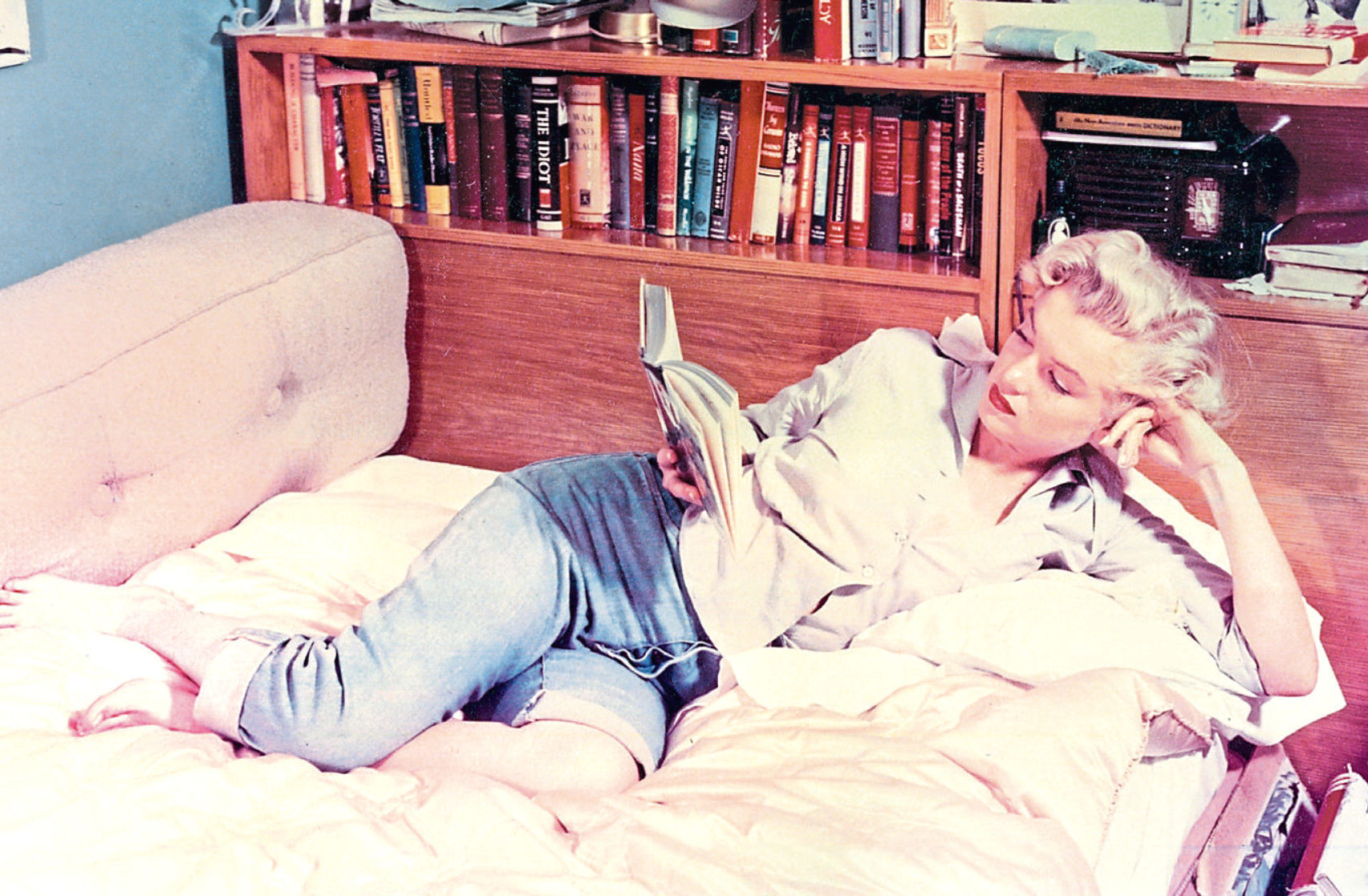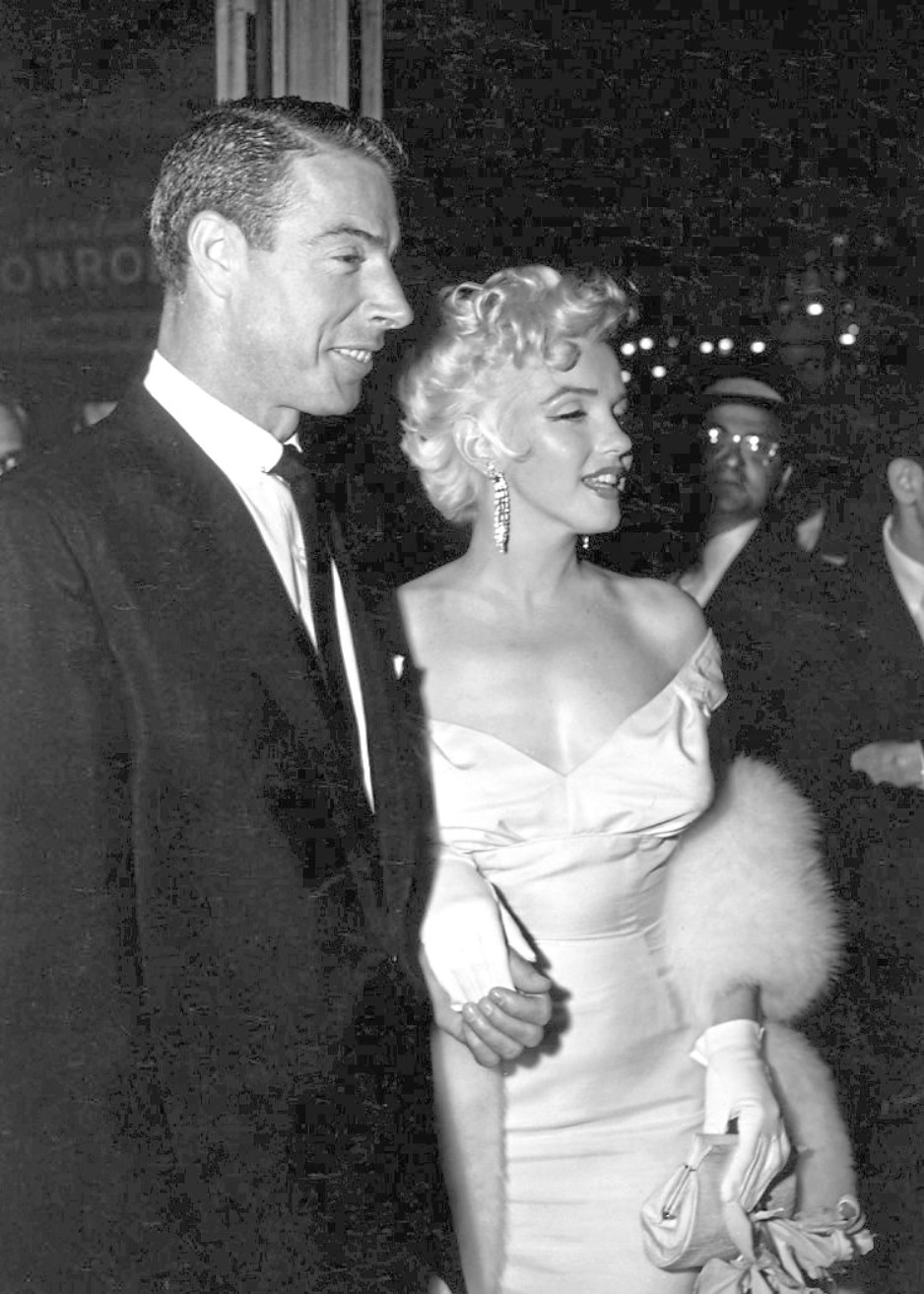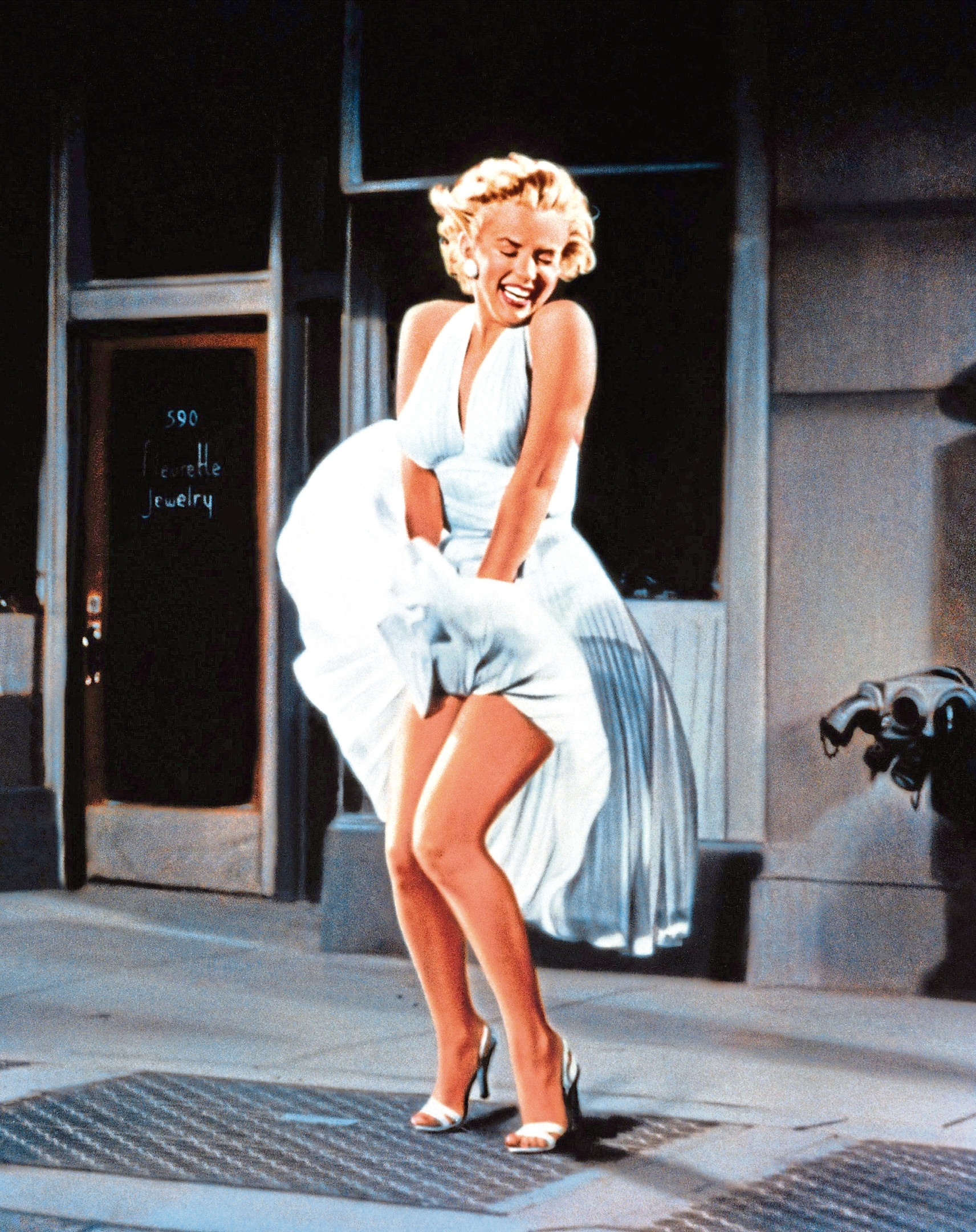
THERE was more to Marilyn Monroe than met the eye.
Far from being the bubbly-but-dumb blonde that had become her movie stock-in-trade, she transformed herself into a well-read and savvy businesswoman.
That’s the thrust of the new book by Marilyn expert Michelle Morgan called The Girl: Marilyn Monroe, The Seven Year Itch And The Birth Of An Unlikely Feminist.
Named after Marilyn’s character in the picture and focusing on 1954 and 1955, Michelle argues the film – with its iconic skirt-billowing scene – helped change everything for her.
Tired of the same old roles, she upped sticks from Hollywood to New York and set up her own company Marilyn Monroe Productions to take control of her own career, an act key to the collapse of the studio system.
“I would argue these two years were definitely Marilyn’s happiest years,” says Michelle.
“The Seven Year Itch really inspired her because she fought for that role. It became such a huge film, and the skirt-blowing scene was such a big deal, and that really inspired her to do more with her own life and to take on more challenges than she had had the ability to take on in the past.
“So it was a pivotal time for her because she changed her own life, and that spirals out and changes a lot of other people’s lives – it changed a lot of lives for actors and actresses who became inspired by her to walk out of their own contracts, and she started this ripple that’s still going on now.”
While the scene in which Marilyn’s white dress is blown upwards as she stands on a subway grate is one of the most famous in cinema history, popular wisdom has it that this was also what killed her marriage to Joe DiMaggio.
“It was,” agrees Michelle. “He always wanted a wife, not an actress, which is surprising because they were dating for two years before they got married and he obviously knew she was a huge star.
“But he was under the impression that, once they got married, she would settle down and have children but of course that didn’t happen.
“And when they filmed the skirt-blowing scene, he was stood there on the sidelines, and saw all the male photographers shouting at her and all the fans screaming at her and her skirt flying over her head and he just was not pleased at all.
“Nobody really knows what happened that night but there were certainly words said and very shortly afterwards they divorced.
“But the funny thing is that, once they separated, they became close friends. Once she had divorced Arthur Miller at the very end of 1960 DiMaggio came back into her life and they were best friends from then until the time she died.
“He nursed her during that time and actually came back and organised her funeral and made sure she always had roses on her crypt. DiMaggio really stood by her and never spoke about her or wrote a book. He loved her but I think he realised he was a much better friend to her than he was a husband, and she said quite a few times they were friends but she’d never marry him again.”
Marilyn became more of a businesswoman when she formed her own production company but Michelle points out: “It goes back a long way to the 20s and 30s when Mary Pickford formed her own studio with her then husband Douglas Fairbanks, and then co-founded United Artists.
“But the strange thing was all this female empowerment that was happening in the film industry basically stopped in the 40s.
“I did a lot of research into old newspapers looking for the phrases ‘female producer’ and ‘female director’ and it all stopped at the end of the 30s so Marilyn was the first woman for decades to set up her own film production company and that generated a lot of media interest at that time.
“Basically the studios were full of men and what they said went, and it really annoyed them when Marilyn walked out on Fox Studios – not only that but she was a woman who had dared to say no the studio heads, that wasn’t done at all.
“Actresses were seen as property. At one point she couldn’t even get her own dressing-room. They wouldn’t even have called her an actress, she was just ‘a player’ in the film.
“That’s what she rebelled against. She could see it wasn’t fair on her and it wasn’t fair on other actresses who were coming up behind her and she wanted something done about it.”
All this was going on in the 50s so Michelle’s book is perfectly-timed as Holywood is still rocking from the Harvey Weinstein scandal and the #MeToo and #TimesUp campaigns aimed at ending the abuse of women by powerful men.
“It’s extraordinary,” says Michelle. “When the whole Weinstein, #MeToo and #TimesUp thing started, I couldn’t believe it because there are parts of my book where I talk about the sexual harassment of women in Hollywood back in the 1950s.
“I spoke to people who witnessed it and I was under the impression that didn’t happen any more. I thought, probably naively, that it was just back in the day that this happened, that the casting couch was long gone.
“And then all of this came out and I thought it was crazy that first of all this should be happening in this day and age, and secondly that it was happening when my book was coming out.”
Knowing what we know now, would Marilyn have had a problem with the last two words of the book’s title, “unlikely feminist”?
“Back in the 50s I don’t think she would have described herself as a feminist because of what that word meant then,” explains Michelle.
“And it’s actually quite a complicated subject even now because before I started writing the book I wouldn’t have called myself a feminist because I thought they were all ‘burn-your-bra’ kind of people!
“But then I started writing the book and thinking about women and what was – and is – going on and I realised, ‘My God, I am actually a feminist!’.
“It’s not about the old clichés, it’s about sticking up for yourself and demanding your rights and that’s what Marilyn did but that’s not how feminism was portrayed in the 50s.
“That’s why I say she was an unlikely feminist because back then there’s no way that women would have accepted her as such.
“I think were she still alive, she would describe herself as a feminist and be really proud of everything she achieved and all of the outspokenness but back then people may have had a problem with it because of the connotations at the time.
“Marilyn also showed you could be a strong woman and still retain your glamour and that, too, went against the way feminism was looked at in the 50s – you couldn’t be strong and be walking around in a bikini.
“Marilyn was really glamorous and she liked being glamorous. There were times she dressed down but every woman does. She loved wearing jeans and a shirt for instance but Marilyn in jeans and a shirt doesn’t look like Agnes down the road in jeans and a shirt!”
“Marilyn might have been one of the first to combine being a strong woman and glamour but now we almost expect it, I’m thinking of the likes of Angelina Jolie.
“I think we do expect it now. Whenever a star is seen as dressed down or with no make-up the media says, ‘God, look at her!’ It’s a horrible thing, people expect you to be forever young, forever beautiful, forever glamorous but still be outspoken and a good businesswoman.
“There’s a lot of pressure that goes into being a famous woman.
“Now, Marilyn Monroe would definitely have been talked about in terms of female empowerment.”
The Girl: Marilyn Monroe, The Seven Year Itch And The Birth Of An Unlikely Feminist is published by Running Press on May 31.

Enjoy the convenience of having The Sunday Post delivered as a digital ePaper straight to your smartphone, tablet or computer.
Subscribe for only £5.49 a month and enjoy all the benefits of the printed paper as a digital replica.
Subscribe
